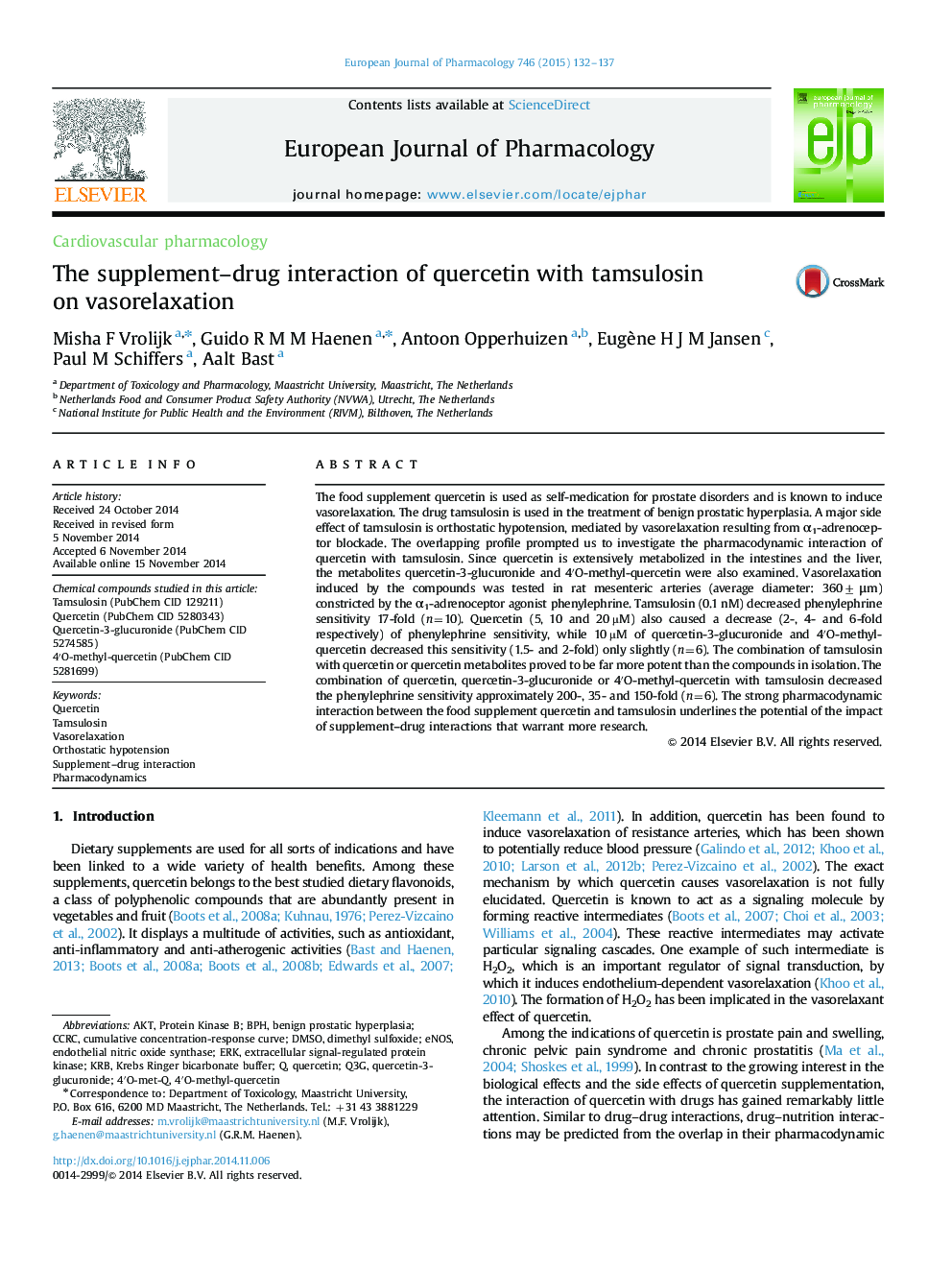| Article ID | Journal | Published Year | Pages | File Type |
|---|---|---|---|---|
| 2531575 | European Journal of Pharmacology | 2015 | 6 Pages |
The food supplement quercetin is used as self-medication for prostate disorders and is known to induce vasorelaxation. The drug tamsulosin is used in the treatment of benign prostatic hyperplasia. A major side effect of tamsulosin is orthostatic hypotension, mediated by vasorelaxation resulting from α1-adrenoceptor blockade. The overlapping profile prompted us to investigate the pharmacodynamic interaction of quercetin with tamsulosin. Since quercetin is extensively metabolized in the intestines and the liver, the metabolites quercetin-3-glucuronide and 4′O-methyl-quercetin were also examined. Vasorelaxation induced by the compounds was tested in rat mesenteric arteries (average diameter: 360± μm) constricted by the α1-adrenoceptor agonist phenylephrine. Tamsulosin (0.1 nM) decreased phenylephrine sensitivity 17-fold (n=10). Quercetin (5, 10 and 20 µM) also caused a decrease (2-, 4- and 6-fold respectively) of phenylephrine sensitivity, while 10 µM of quercetin-3-glucuronide and 4′O-methyl-quercetin decreased this sensitivity (1.5- and 2-fold) only slightly (n=6). The combination of tamsulosin with quercetin or quercetin metabolites proved to be far more potent than the compounds in isolation. The combination of quercetin, quercetin-3-glucuronide or 4′O-methyl-quercetin with tamsulosin decreased the phenylephrine sensitivity approximately 200-, 35- and 150-fold (n=6). The strong pharmacodynamic interaction between the food supplement quercetin and tamsulosin underlines the potential of the impact of supplement–drug interactions that warrant more research.
